Maine is the northernmost state in New England and by far the largest. And while its vast inland forests are dominated by oaks and hardwoods, much of its seacoast has the kind of spruce forest that you normally have to go much farther north to see—the cold Humbolt current cools down the adjacent land. All that varied landscape provides plenty of opportunity for many different kinds of mushroom. And while Maine has more mushrooms than we can cover in one article, we can introduce you to a few stand-out species[i].
Our Recommended Field Guides for Maine
COVER | TITLE | Header | ||
|---|---|---|---|---|
OUR #1 RATED | ||||
Edible Wild Mushrooms in Maine
Many writers caution that mushrooms are fiendishly difficult to identify and that one small mistake will kill you. That’s not quite true. What is true is that mushroom identification requires an experienced eye and careful attention to detail. Most beginners lack both. And beginners don’t know which small mistakes are the dangerous ones. Even those mushrooms often recommended to beginners as fool-proof mostly aren’t. There is simply no substitute for experience and study.
If you do indeed go Mushroom Hunting make sure you have the proper tools, take a quality knife with you and a basket/bag for your haul!
This list is not meant to be used as a replacement for a field guide, spore prints, an identification app or an in person guide.
This article is therefore not an invitation to go out and harvest some mushrooms for dinner tonight. Rather, it is our attempt to explain why developing the expertise you need to forage may be worth it.
Lobster Mushroom (Hypomyces lactifluorum)
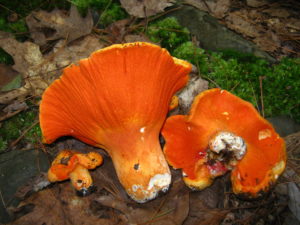

Of course Maine has a lobster mushroom[ii]. The name comes both from the bumpy, red exterior and from the vaguely fish-like taste. The taste is not strong but can be intensified by proper preparation.
But lobster mushroom is not really a mushroom—it is a disease of mushrooms in the Lactarius and Russula genera in which the victim’s fruiting bodies are attacked by a crust-like fungus and rendered incapable of producing spores. Instead, the crust distributes its own spores.
The really odd thing is that lobster “mushroom” is safely edible and has the same taste regardless of the species of the victim. The only caveats are that old, past-prime lobster sometimes sickens eaters. There is also some suggestion that people with iodine allergy may have trouble with lobster mushrooms.
Witches’ Butter (Tremella mesenterica)
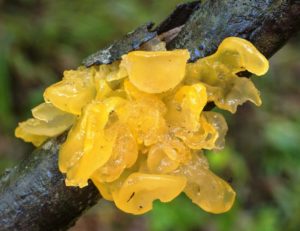

This species[iii] is one of three that are all called witches’ butter, but all three are edible and taste about the same. Actually, they don’t have a taste but do make the tongue tingle pleasantly, rather like menthol. They are little yellow, gelatinous blobbies—the fungus is parasitic on wood-decaying fungi and therefore fruits from old, dead wood. While there is no reason to eat witches’ butter in quantity, it’s a fun edible to know about.
Puffballs
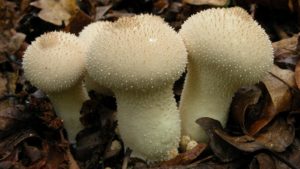

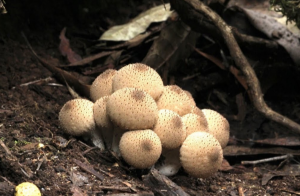

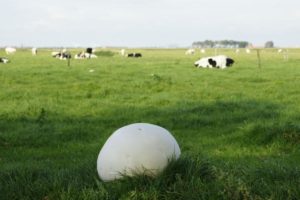

Puffballs are a group of more or less ball-shaped mushrooms that are mostly not related to each other[iv]. They are edible when young, before the spores begin to develop—the exception is the Poisonous Earthball group, which are fairly easy to recognize by their firmness and their thick rind. Earthballs also start darkening inside much younger. Puffballs do bear a frightening similarity to the egg-stage of some of the deadly Amanitas. When harvesting puffballs for the table, always slice each puff vertically through middle to check for signs of a developing Amanita.
Maine has at least three puffball species: Common Puffball (Lycoperdon perlatum), which is small with a short, thick stalk and a bumpy exterior, Stump Puffball (Lycoperdon pyriforme), which also has a stalk and often fruits in large groups, and the Giant Puffball (Calvatia gigantea), which is stalkless and about the size of a basketball.
Shaggy Mane (Coprinus comatus)
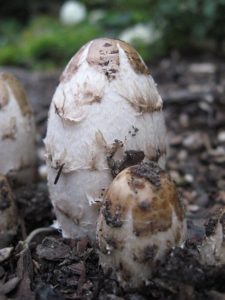

The shaggy mane[v] is one of two relatively common species well-known for turning to black goo as the spores mature. Gooification begins at the margin of the cap and then progresses inward and upward—the spores flow away in the goo. While none of this sounds very appetizing, both shaggy mane and its relatives are prized edibles—even the goo, called ink, makes an interesting food dye. The catch is that anyone eating these must abstain from alcohol during the meal and for two days afterwards lest a reaction between the alcohol and a substance from the mushroom react and cause illness.
Shaggy mane has long, narrow cap like a closed umbrella. Soft scales on top give a shaggy appearance.
Bear’s Head (Hericium americanum)
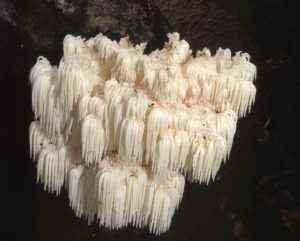

This mushroom is one of several sometimes referred to, as “lion’s mane,” a name more properly applied to H. erinaceus. The true lion’s mane has great promise as a medicinal mushroom, and many people assume that all Hericiums are equally beneficial and in exactly the same ways. There is no evidence for that. What is clear is they all taste the same, with a surprisingly crab-like flavor. The long, soft spines are not noticeable in the mouth.
Bear’s head is a large, branched club covered with long, white or off-white hairlike spines.
Agricus ssp.
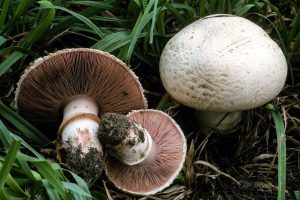

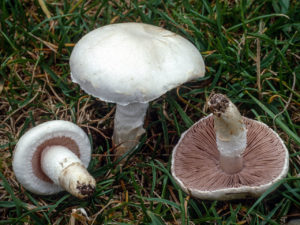

The white button mushrooms sold in grocery stores and the slightly more upscale portabellos and criminies all belong to the species, Agaricus bisporus[vi]. It is native to parts of North America, but the specimens reported from Maine are escapees from cultivation; genetically, they are European. A closely-related and very similar species, the Meadow Mushroom (Agaricus campestris)[vii] has also been reported from Maine, but this probably an error—what grows in North America is a confusing complex of species very similar to the European meadow mushroom.
Wood-Ear (Auricularia auricula-judae)
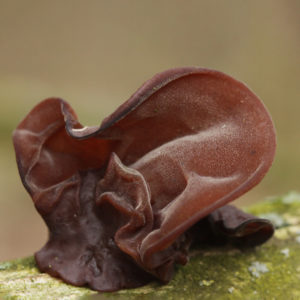

The wood-ear[viii] looks like a red-brown ear on a tree-branch, at least usually. Less ear-like, irregular shapes are possible, too. The rubbery texture makes this surprising edible a good addition to soups. A related species is popular in Asia.
Chanterelles (Cantharellus sp.)


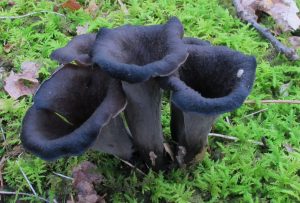

The chanterelles are a distinctive group of choice edibles, though they are no without their poisonous look-alikes. Maine has at least two of these trumpet-shaped species, the orangish Smooth Chanterelle (C. lateritius), and the variably dark Black Trumpet (Craterellus fallax).
Poisonous Mushrooms in Maine
Don’t assume a mushroom is edible just because it’s not on this list. Not only are there more poisonous mushrooms than will fit here, but there are species whose status is unknown or subject to debate. As for simple rules of thumb for which mushrooms are poisonous and which aren’t, none of them are reliable. Just identify all mushrooms before eating them.
Eastern Destroying Angel (Amanita bisporigera)
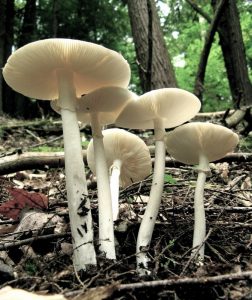

There are multiple very similar species, all handsome, white or whitish, that are called destroying angel and will probably kill you if you eat one. This is the one from Maine, among other places[ix]. They are sometimes confused with edible white or whitish species and eaten. The toxin takes a long time, which complicates diagnosis. Victims do have a chance of survival if they get prompt, appropriate treatment.
Eastern Jack O’Lantern Mushroom (Omphalotus illudens)
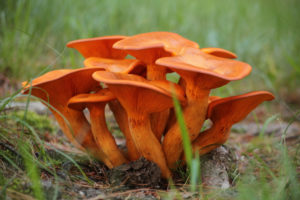

The eastern jack[x] is sometimes confused with some of the orange or yellow chanterelles—the resemblance is slight, but the confusion happens anyway, a clear example of why both expertise and careful attention to detail are necessary for safe foraging.
Sickener (Russula sp.)
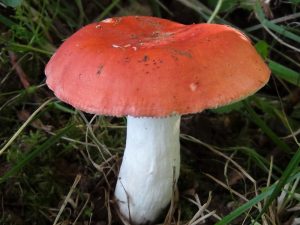

Maine has pretty red and white mushrooms that cause severe gastrointestinal upset in any humans who eat them[xi]. What species are these? There are multiple possibilities, all of them share the common name, sickener, but good luck figuring out which sickener this is since Russula taxonomy is a complete mess[xii]. There are also Russulas in other colors, but their taxonomy is also a mess.
Deadly Galerina (Galerina marginata)
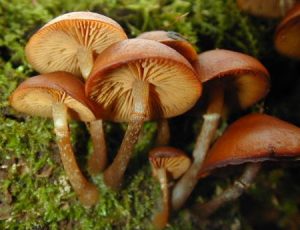

Maryland’s most dangerous species may be the well-named Deadly Galerina[xiii]. Not only does it contain the same toxin as the Destroying Angel[xiv], but it is a close look-alike of many edible and psychoactive species—and in some cases, it can even fruit mixed in with flushes of sought-after species. Any LBM, or “little brown mushroom,” should be very carefully examined, every single mushroom, every single time, because mistaken identification could kill you.
Our Recommended Field Guides for Maine
COVER | TITLE | Header | ||
|---|---|---|---|---|
OUR #1 RATED | ||||
Magic Mushrooms in Maine
Maine might legalize psilocybin use, at least under some circumstances, but as of this writing, the change hasn’t been made—and even if it is made, that will be a change in state law, not Federal law[xv]. So please be careful not to go to prison. Also, be careful not to die prematurely—psilocybin mushrooms themselves are relatively safe, but have deadly look-alikes, some of which can even grow within clumps of edible or psychoactive mushrooms. Positively identify every single mushroom before eating, no matter what.
Here are some of the psychoactive species you might see in Maine[xvi].
Panaeolus
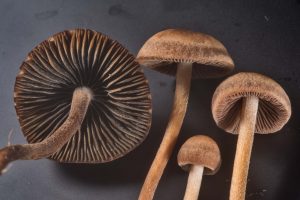

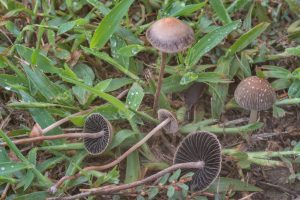

Panaeolus[xvii] is the genus name of the mottlegills, so called because the spores develop and darken unevenly. Not all species in the genus are psychoactive. Potency varies among those that are. The Banded Mottlegill (P. cinctulus)[xviii] is weak, but possibly useful for microdosers. Another species, found in Maine, The Turf Mottlegill (P. fimicola)[xix], is sometimes included in lists of psychoactive mushrooms, but it is marginally active at best and may be mildly toxic.
Psilocybe
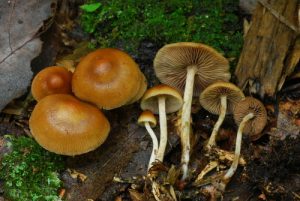

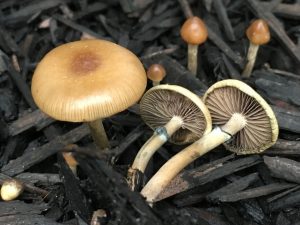

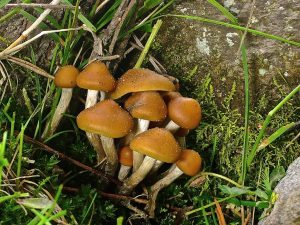

This is the genus of Psilocybe cubensis, one of the most famous and most widely cultivated psychoactive mushrooms in the world. P. cubensis does not grow in Maine, as the climate is too cold. Three other species in the genus are documented for the state, Psilocybe caerulipes, Psilocybe stuntzii, and Psilocybe aztecorum. However, that last is mostly a Mexican species, so its listing may be misidentification.
Gymnopilus
Gymnopilus is a large genus but has only a few psychoactive members—and even these few are not well-known among most psychonauts. There are only a few published trip reports, but these suggest a qualitatively different[xx] high than what the Psilocybes or Panaeolus mushrooms give. Maine has at least one active gym species, but because the taxonomy of the group is being revised, it’s difficult to say which species it is.
Our Recommended Field Guides for Maine
COVER | TITLE | Header | ||
|---|---|---|---|---|
OUR #1 RATED | ||||
References:
[i] (n.d.). Fungi of Northern Maine. inaturalist
[ii] Bergo, A. (n.d.). Lobster Mushrooms. Forager-Chef
[iii] Adamant, A. (2018). Foraging Witch’s Butter Mushrooms. Practical Self-Reliance
[iv] Kuo, M. (2008). Puffballs. The MushroomExpert
[v] Adamant, A. (2018). Foraging Shaggy Mane Mushrooms. Practical Self-Reliance
[vi] Kuo, M. (2018). Agaricus bisporus. MushroomExpert
[vii] Kuo, M. (2018). Agaricus campestris. MushroomExpert
[viii] (n.d.). Wood Ear (Tree Ear). Missouri Department of Conservation
[ix] (n.d.). Amanita bisporigera. Amanitaceae.org
[x] (n.d.). Omphalotus illudens (Schwein.) Bresinsky & Besl—Jack O’Lantern. First Nature
[xi] (n.d.). Russula emetica (Schaeff.)Pers.—The Sickener. First Nature
[xii] Kuo, M. (2009). The Genus Russula. MushroomExpert
[xiii] (n.d.). Deadly Galerina (Galerina marginata (Batsch) Kühner 1935. MarylandBiodiversityProject
[xiv] (n.d.). Galerina marginata (Batsch) Kühner—Funeral Bell. First Nature
[xv] Billings, R. (2022). Maine Could Legalize “Magic Mushroom” Drug to Treat Depression. Press Herald
[xvi] (n.d.). Which Psilocybin Mushrooms Grow Wild in My Area? Shroomery
[xvii] (n.d.). Panaeolus. Wikipedia
[xviii] (n.d.). Panaeolus cunctulus. Philosophy
[xix] (n.d.). Panaeolus firmicola (Pers.) Gillet—Turf Mottlegill. First Nature
[xx] Psycho Gnome (2014). Gymnopolus luteus found in Wisconsin (With Trip Report). Shroomery

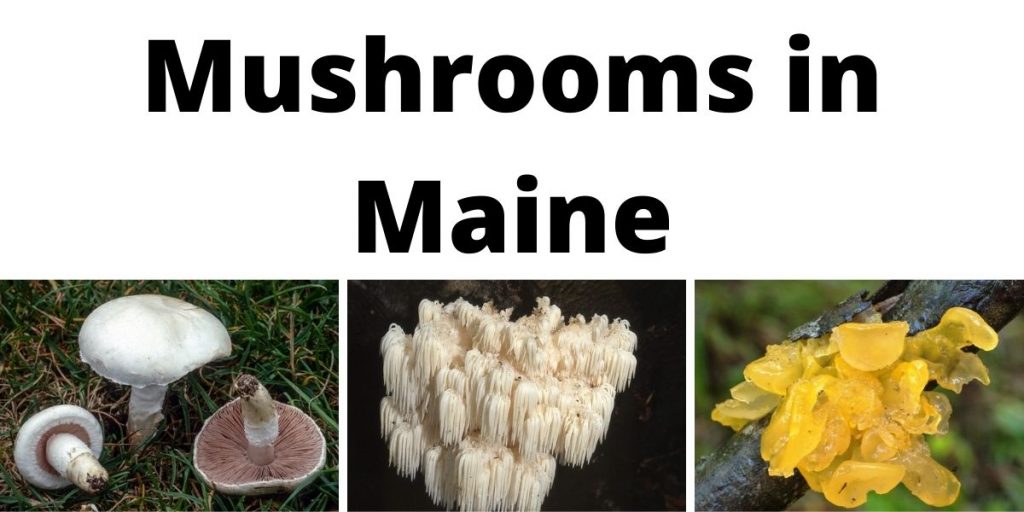
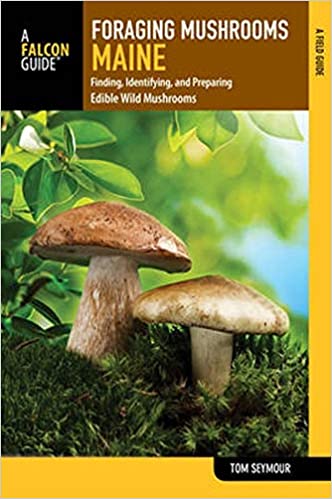
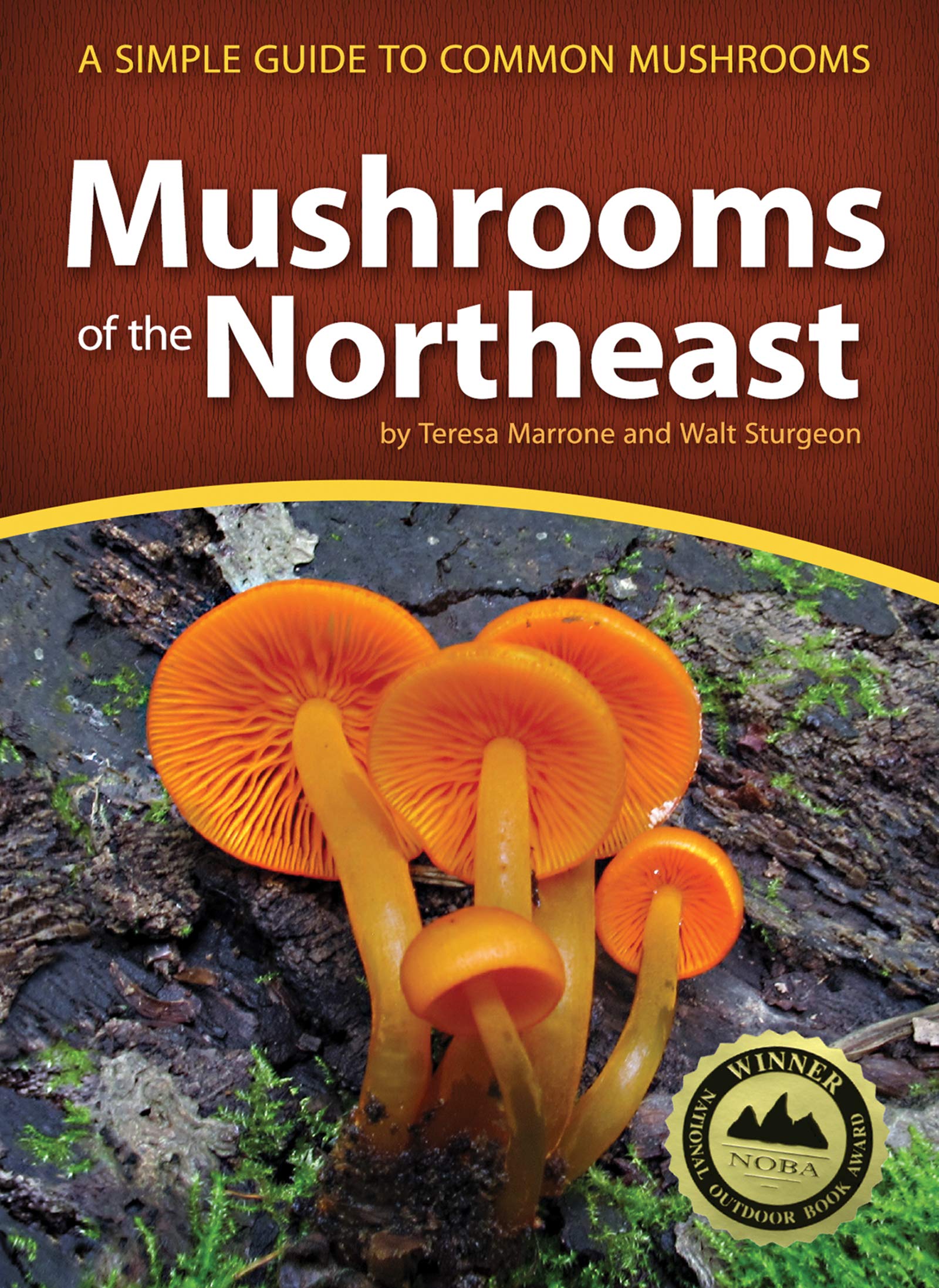

I found p. Ceurlupis in NH